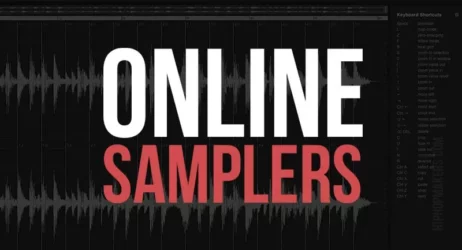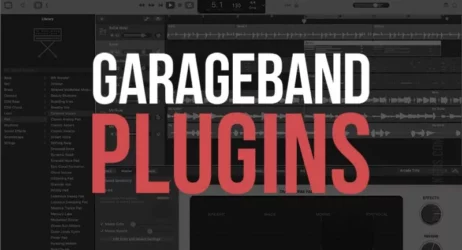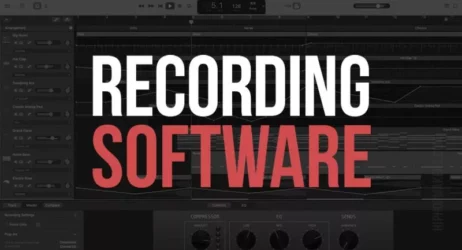This guide will explain what are stems in music, why they are important, how they are used, and many other common questions.
What Are Stems in Music?
Audio stems are the individual tracks in a song, and they are used for song arrangements and final audio mixing. Stems are usually separated into groups such as drums, bass, vocals, and instruments. Audio stems get imported into music software to mix vocals and instruments individually.
- What Are Stems in Production
- What Are Music Stems Used For
- Why Are Music Stems Important
- How Do You Get Stems For A Song
- How Do You Create Stems
- What Is A Stem File
- What Are Stems In Beats
- What Are Vocal Stems

What Are Stems in Music Production?
Audio stems are the individual elements that make up an audio recording. They are usually separated into different tracks of musical instruments.
A stem can be a single track of audio or an isolated portion of a mixed track with its own volume level, equalizer settings, and more.
Stems are often used in production to create remixes or to combine various sections of a song for DJing.
Stems can be utilized throughout the production phase and post-release. Stems are stereo recordings extracted and refined from multiple audio tracks.
Stems segment bigger ensembles, whether natural or artificially recorded, into smaller portions.
Strings, brass, woodwinds, and percussion may be separated from an orchestral mix, whereas drums, guitars, keys, and vocals might be separated from a rock band. On the other hand, Stems are clusters of elements that make up the final mix, not individual ingredients.
Stems are most utilized when it comes to allowing somebody further up the chain of delivery to control the mix, which means altering the audio.
Stems are very popular in the music industry and among many other audio production areas – they are not just limited to music.
Multi Track Stems
Multi tracks are tracks that can be treated as separate elements, where the sources are inputs from microphones or direct inputs, either mono or stereo.
In contrast with multi-tracks, the stems are entirely different with respect to combination and composition treated as a fragment of a whole larger mix.
Both of the terms, stems, and multi-tracks, relate to audio files but are not interchangeable. Both of them are distinctive and different from each other, and both of these play a vital role in the composition.
Benefits of Stems Against Multi Tracks:
Stems have many advantages over multi-tracks for specific applications depending upon the need of the hour. Some of these advantages are as follows.
- Efficient For Over Dubbing: Stems can become handy for overdubbing as stems are helpful and require fewer steps when it comes to multi-tracks.
- Mixing Ease: when it comes to mixing, stems are quite accessible compared to the multi-tracks, making it easier for mixing engineers.
- Flexibility: It is quite flexible for the mastering engineer if the stems are available in contrast with the multi-tracks if any last-minute tweaks are required.
Many composers are using stems regularly, and it has become a part of their regular composing routine. Though it takes some additional effort, the result is unmatched and saves much time in the long run. Once the composer is familiar with the process, the process flow is pretty easy.
Embedding The Stems
Stem stereo tracks are embedded at the end of a mix (mix being composed). Drums, Guitars, Vocals, Bass, and Synths are the most popular items.
The purpose of a stem is to let remix-ers use elements of the mix in its final form while maintaining the isolation of individual tracks.
What Are Music Stems Used For In Music Production?
Stems have multiple roles in multiple forms of composition in the whole music and mixing industry. The usage of stems has proved to be a time saver compared to bouncing each track, and the work on categories of the sound is much less compared to dealing with individual stem tracks.
Collaborators can easily add, subtract or alter the composition, enabling outside collaborators to contribute to the mixes in a much easier way.
Why Are Music Stems Important?
Stems are quite important compared to the multi-tracks as they may get disarranged and are difficult to work with. Stems are smaller chunks as compared to tracks and are quite easy to access and share across the mixes. Overdubbing with fewer files will be a lot easier and productive with fewer files and less hassle.
Tracked-out stems will provide you with a plethora of options for making your vocals stand out and improving the overall quality of your music. Small adjustments to the beat stems’ volume levels can already have a big effect. Every song requires (little) changes in various places.
It allows DJs and composers to perform in a new way. Music producers can break their recordings into four separate musical sections using the stems approach. So that DJs have complete control over each aspect.
How Do You Get Stems For A Song?
If you are working with someone on a music project, you would need to ask them to export the project stems and send them to you.
If you are looking for audio stem files to download online, here are some options.
- Beatport: it is considered the number one resource for song stems. It is considered the largest platform with the largest collection of stems and where the artists release stems most frequently.
- Splice Contest: an efficient way to gather the desired song stems. Splice gives way the quality stems from multiple well-known artists.
- Wavo: Time to time contests are held in which the giveaways are quality stem to songwriters.
- Skio: Another way of getting quality stems for the songs.
- Traxsource: They often sell the stems from a large variety of artists and record labels.
How Do You Create Stems?
Creating stems in your composition projects can conveniently manage the workflow and pass on the chain for further mixing.
There are many ways to start creating the stems of your own.
Here is a tutorial on how to export stems in FL Studio.
Multiple Passes In Solo
The easiest and simplest method is to separate multiple tracks and bounce them out (one stem at a time). This approach has the benefit of enabling you to ignore the stems until you’re ready to make them.
If you have a fast computer capable of bouncing much quicker than actual time, this method seems suitable for many beginners and is also good to start with. Unfortunately, this process is very time-consuming, making it less efficient; the chances of missing the tracks are very much there, and it makes it mandatory to double-check the summed stems with the full mix once ready.
The Stem Creator
Stems can be created using The Stem Creator; it is a simple, standalone tool created for Stem file creation – makes it simple to create Stem files. The free Stem Creator music.
The Stem Creator imports four-track components, each created as independent audio files in a DAW (digital audio workstation) or wave editor and a stereo master of the whole track.
Metadata such as stem name, album title, and stem color can be modified after they’ve been imported. Then, for balanced playback, master compression and limiting can be applied to all items—the Stem Creator exports and bundles the stems into a single stem.WAV file after adjusting the compression and limiting.
Related: Best Free DAW Software Apps
What Is A Stem File?
A Stem file is a multi-channel, open audio file that comprises a recording divided into four elementary parts: bass, vocal, drums, and melody.
You can blend in ways that weren’t possible before because each piece is available separately, and it can be mixed in a number of mixes as desired.
Once blended identically, stems are a chunk of larger mixes that produce the same output as individual chunks.
What Are Stems In Beats?
Stems in beats allow audio engineers complete control over the sound of your music and allow them to correct any beat mixing difficulties.
For example, they’ll be able to strip out particular frequencies while increasing or maintaining others, allowing them to make your voice sit better in the mix. It’s evident that most producers have minimal audio engineering skills; thus, their beats will almost certainly contain mixing difficulties that an audio engineer can fix.
What Are Vocal Stems?
Stems are fragments of the main mix. A stem is a multi-channel musical recording that includes bass, drums, vocals, and melody.
In contrast, a vocal stem is a vocal track that usually consists of a melody that is sung but can also be spoken. This track is frequently pre-mixed before the final effects are applied. This track may also be divided into pieces and reassembled to form a new tune, and this is referred to as “sampling.”
Summary of Stems in Music
Stems are the individual tracks in a song. They are used for song arrangement and final audio mixing. Typically, stems are divided into groups such as drums, bass, vocals, and different instruments. To mix vocals and instruments individually, audio stems are imported into music software.
I hope you found this information on audio stems in music helpful.
If we missed anything, please share it in the comments.





